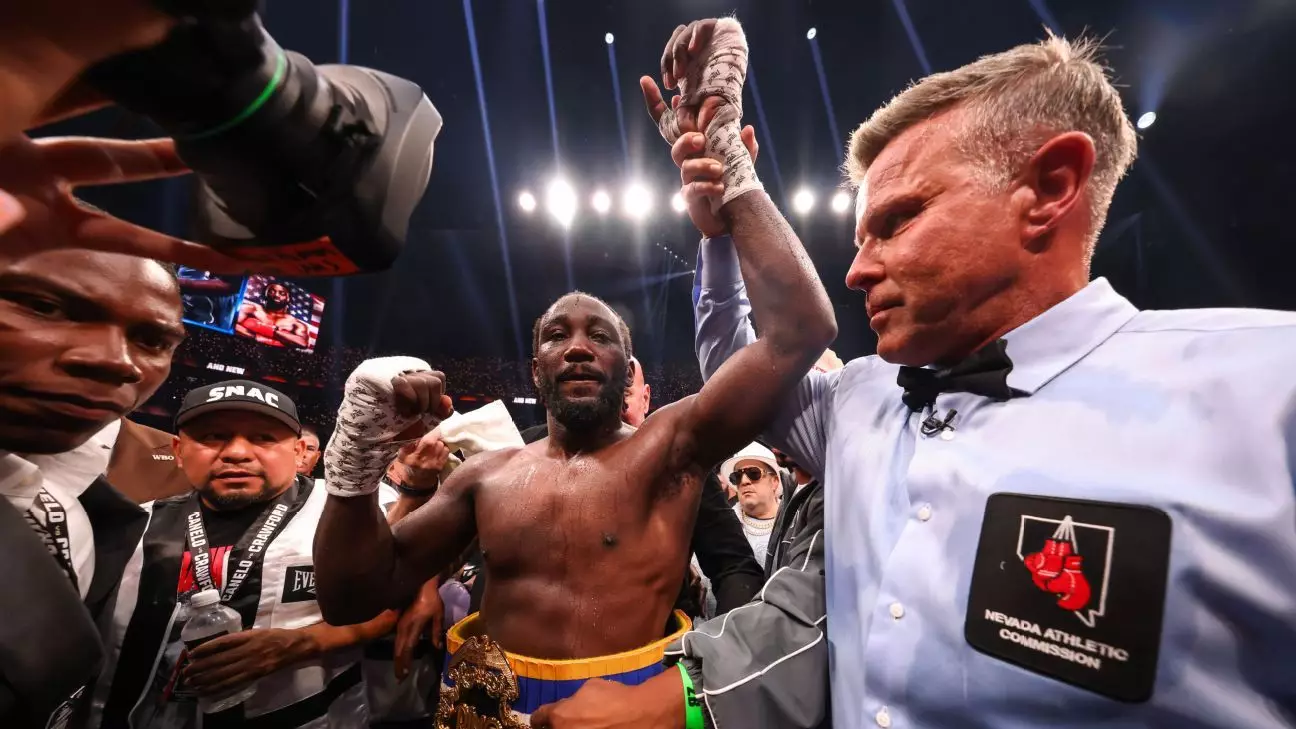In recent weeks, the combat sports landscape has been stirred not by a traditional boxing rivalry or a classic MMA showdown but by a curious clash of personalities and ambitions that transcends the ring. The heart of this controversy lies in the burgeoning tension between boxing superstar Terence Crawford and UFC lightweight champion Ilia Topuria, whose audacious challenge and provocative antics highlight a fundamental shift in how athletes from varied disciplines seek recognition and influence. This confrontation, though seemingly amateurish at face value, underscores a deeper fascination with cross-promotion and the blurring of sporting boundaries that is redefining modern combat sports.
The story begins with Topuria’s vocal desire to fight Crawford—a move that many critics see as a desperate attempt to stay relevant in a competitive media environment. Topuria’s open declaration of knocking out Crawford and his subsequent social media war encapsulate a provocative strategy to attract eyeballs and establish a foothold in boxing’s lucrative arena. This is emblematic of a broader trend: athletes from MMA and boxing are increasingly eager to test themselves beyond their comfort zones, seeking validation via high-profile crossovers. However, as Crawford dismisses Topuria’s efforts outright, branding him as a “clout chaser,” the dispute reveals a clash not just of ego, but also of cultural identity and credibility within combat sports.
What stands out most is Crawford’s outright skepticism and dismissiveness of the UFC fighter’s challenge. His comments expose a sense of disdain for unproven claims made by athletes who have yet to make their mark outside their primary domain. Crawford’s assertion that he hasn’t even seen Topuria fight emphasizes a core issue—core respect and legitimacy in combat sports often hinge on established track records. In an era where social media fame can sometimes eclipse actual skill, Crawford’s critique underscores the importance of authenticity and pedigree in earning a true opportunity to compete at the highest levels.
The Power of Branding and Cultural Signifiers
An interesting element in this spat is Topuria’s choice of entrance music—”Canción del Mariachi” from “Desperado”—a cultural symbol he shares with his UFC moniker “El Matador.” The controversy over Crawford walking out to his own music, which Topuria uses in the Octagon, illustrates how fighters leverage cultural and personal branding to carve out unique identities. Topuria’s challenge to teach Crawford how to dance his “mariachi” signifies a desire to not only fight but to embed his persona into the narrative, blending cultural artistry with combat prowess.
This act of cultural signification goes beyond mere bravado; it reflects the evolving nature of martial arts as a form of personal storytelling. Fighters are now brands, identities crafted to resonate emotionally with audiences, whether through music, costume, or style. Topuria’s provocations, therefore, are as much about establishing a cultural narrative as they are about securing a lucrative payday. From this perspective, his challenge is less a direct assertion of skill and more an act of theatrical bravado designed to garner attention in an increasingly crowded media landscape.
Crawford’s dismissive response, labeling Topuria a “clout chaser,” reveals a stark divide: the traditionalist view that fights should be based on merit, and a more modern perspective that sees spectacle and personality as equally vital. Crawford’s contempt for the MMA star indicates a belief that crossover fights lack the legitimacy and prestige that define true boxing competition. Yet, this attitude, while rooted in tradition, may risk missing opportunities to innovate and reinvigorate the sport by embracing the new dynamics of athlete branding and crossover appeal.
Cross-Promotion and the Future of Combat Sports
The broader implications of this feud are undeniable. As crossover fights—like Floyd Mayweather’s bout with Conor McGregor—have proven, mixing disciplines can bring enormous financial upside and fascination among fans seeking novelty. Nonetheless, Crawford’s skepticism highlights a prevailing debate: are these super fights merely spectacles, or do they hold genuine competitive value?
From a strategic perspective, fighters like Topuria understand that capitalizing on their fame outside their main discipline can serve as leverage for future promotions and pay-per-view sales. Yet, Crawford’s position suggests that such moves threaten the integrity of traditional boxing, risking diluting its credibility if fighters pursue hype rather than skill. This tension encapsulates the ongoing struggle within combat sports: balancing the allure of entertainment with the respect for sport’s competitive roots.
Ultimately, what makes this conflict compelling isn’t just the fighters’ personalities but the symbolic stakes they represent. As athletes continue to cross over into new domains, the question remains: will the sport evolve into a hybrid spectacle rooted in skill and respect, or will it become a perpetual arena for spectacle-driven conflicts? For now, Crawford and Topuria’s clash serves as a whistleblower—alerting fans and insiders alike that the boundaries of combat sports are shifting, and that those changes come with both challenges and exciting possibilities.

